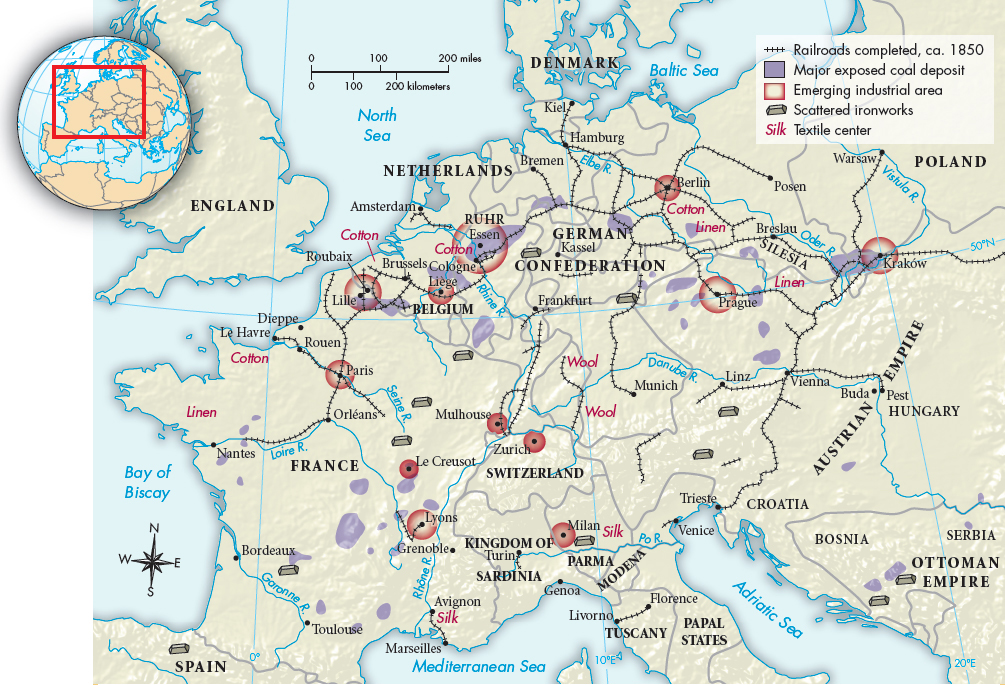A History of World Societies:
Printed Page 696
A History of World Societies Value
Edition: Printed Page 703
Industrialization in Continental Europe
Throughout Europe the eighteenth century was an era of agricultural improvement, population increase, expanding foreign trade, and growing cottage industry. Thus, when the pace of British industry began to accelerate in the 1780s, continental businesses began to adopt the new methods as they proved their profitability. British industry enjoyed clear superiority, but at first the European continent was close behind. During the period of the revolutionary and Napoleonic Wars, from 1793 to 1815, however, western Europe experienced tremendous political and social upheaval that temporarily halted economic development. With the return of peace in 1815, however, western European countries again began to play catch-
They faced significant challenges. In the newly mechanized industries, British goods were being produced very economically, and these goods had come to dominate world markets. In addition, British technology had become so advanced that very few engineers or skilled technicians outside England understood it. Moreover, the technology of steam power had grown much more expensive. It involved large investments in the iron and coal industries and, after 1830, required the existence of railroads. Continental business people had great difficulty amassing the large sums of money the new methods demanded, and laborers bitterly resisted the move to working in factories. All these factors slowed the spread of mechanization (Map 23.2).

Nevertheless, western European nations possessed a number of advantages that helped them respond to these challenges. First, most had rich traditions of putting-
Most continental businesses adopted factory technology slowly, and handicraft methods lived on. Indeed, continental industrialization usually brought substantial but uneven expansion of handicraft industry in both rural and urban areas for a time. Artisan production of luxury items grew in France as the rising income of the international middle class created increased foreign demand for silk scarves, embroidered needlework, perfumes, and fine wines. Focusing on artisanal luxury production made sense for French entrepreneurs given their long history of dominance in that sector. Rather than being a “backward” refusal to modernize, it represented a sound strategic choice that allowed the French to capitalize on their know-